Come join us now, and enjoy playing your beloved music and browse through great scores of every level and styles!
Can’t find the songbook you’re looking for? Please, email us at: sheetmusiclibrarypdf@gmail.com We’d like to help you!
Table of Contents
Paco de Lucía, the flamenco genius
In flamenco, Paco de Lucía was everything: he mastered the technique of the Spanish guitar to perfection. He was responsible for bringing improvisation to flamenco and made it his hallmark. He took risks with each album until he created the flamenco language that we know today. Paco de Lucía discovered the Peruvian cajón and showed it to the world in the form of a flamenco cajón; he gave the guitar the spotlight that today has separated it from singing.
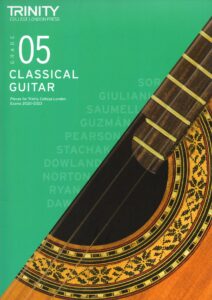
Paco de Lucía recorded 12 albums with Camarón, the most prodigious flamenco voice of all time, and composed Beautiful melodies that have gone around the world. This is the story of a genius who never tired of learning.
Come join us now, and enjoy playing your beloved music and browse through great scores of every level and styles!
Can’t find the songbook you’re looking for? Please, email us at: sheetmusiclibrarypdf@gmail.com We’d like to help you!
THE BOY PACO
“I just want to walk, like the rain runs on the glass, like the river walks towards the sea.” This is what one of Paco de Lucía’s songs (Algeciras, Cádiz, 1947) says and this is how we can summarize his story. He lived for the guitar and is one of the most important Spanish musicians of the 20th century.
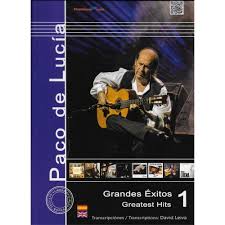
When he was nine years old, his father, the guitarist Antonio Sánchez, took him from school. He needed help paying the bills. Then, little Paco spent ten hours a day playing the guitar in his room, perfected his technique and played for the first time in front of an audience. Originally, flamenco guitars served to accompany the singers, and almost all the singers were gypsies. But “gypsies were frowned upon” and his father did not want the job of singer for his children. He didn’t want people to think they were gypsies. He preferred to teach them how to play the guitar.
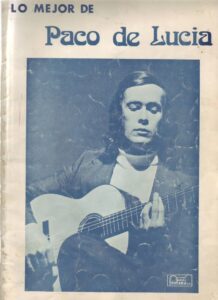
His first teachers, his father and his older brother, Ramón, taught the little boy to place fingers on the mast and to play its first chords. But the guitarist already had flamenco in his head and knew all the palos (flamenco rhythms) before he started playing. He learned it by watching his father and the artists who arrived every morning to his house after work playing at some gentleman’s party Andalusian.
Guitarists and singers passed by that house to continue their own party, and the boy Paco filled his head with songs and melodies. As it is commonly said, Paco de Lucía eat the flamenco. Fortunately, the Algeciras guitarist was from a generation of flamencos who no longer needed to play for any “little gentleman” to make a living.
“Flamenco hasn’t been hungry for ten years. However, there are artists who are popular and make money and continue to accept the gentleman’s game. They accept your money just as before. “This makes me nauseous,” he said in 1974. Many years later, he locked himself in his room again 12 hours a day for an entire month to learn by ear the most popular work in Spanish music: Joaquín Rodrigo’s Aranjuez Concerto (1991). His album was recorded live before expectant guitarists and maestro Rodrigo himself.
Please, subscribe to our Library.
If you are already a subscriber, please, check our NEW SCORES’ page every month for new sheet music. THANK YOU!
What was his contribution? Bringing together two competing musics: Spanish classical music and flamenco. “I play the concerto exactly as it appears in the score, but I never heard it played in rhythm,” he declared. And he explained how a classical guitarist always seeks perfection of sound, and how he stops where he shouldn’t stop if he wants to position his fingers well. He prefixed the rhythm to the cleanliness of the notes because it is what mattered most to him in his music.
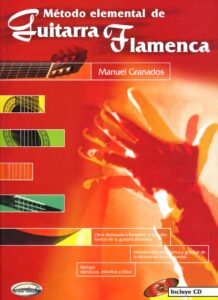
The guitarist invented his own alphabet for flamenco, and this is the legacy that leaves musicians from all over the world. His guitar seems to speak: “Somehow, when I play, I try to imitate the person who sings,” he said in an interview. He believed that the human voice was the most powerful instrument. When he was little he wanted to be a singer, but he was chubby and shy, two very bad qualities to overcome embarrassment in a land like Andalusia, where jokes are made of whatever. But he always liked to sing, and he recorded his voice for the first time in two songs from Luzia (1998), those dedicated to her mother, Lucía Gomes, the Portuguesa, and Camarón, her soul mate.
ENTRE DOS AGUAS (BETWEEN TWO WATERS)
In 1973 Fuente y caudal was published, for him his most important album. He is 26 years old, he reaches technical perfection and maximum speed; is used For the first time in flamenco, the fade out at the end of several songs. This work was found in all European record stores and put flamenco into orbit all over the world. It was her fault that he had a rumbita, which was added to the album at the last minute because a song was missing. Between two waters is today the most international rumba and its most popular song.
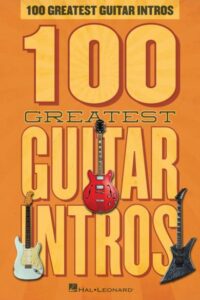
When he was already a great figure, Paco de Lucía recorded his first live album. It was 1975, and he was on the most important stagein Spain: the Teatro Real in Madrid. For the first time, a flamenco guitarist sat in front of an audience, crossing one leg and supporting the guitar in it.
The following year his name was heard again: he decided to give prominence to his musicians and became the only flamenco guitarist accompanied by a full-fledged group, a bass and a lute accompany the melodies of Paco de Lucía in Almoraima , the album that includes the emblematic and Moorish bulería of the same name. From this moment on, he will find in other musicians the way to reach brilliant moments of inspiration.
PACO DE LUCIA SEXTET
In 1981, Solo Quiero Camina appears , an album with very powerful songs that bring new instruments to flamenco. We hear for the first time the cajon that Paco discovers on one of his tours in Peru at the end of the seventies. Rubem Dantas is the Brazilian percussionist in charge to touch it. Along with them are the very flamenco flute of Jorge Pardo, the precise and subtle bass of Carles Benavent, the voice of Pepe de Lucía and the accompanying guitar of Ramón de Algeciras.
They are the Paco de Lucía Sextet, a group very inspired, round musical, full of creativity and daring. This time the sound is different: it is fresh, compact, wild and flamenco. The musicians improvise like in jazz, they dialogue with their instruments and, when performing live, they enjoy conversing in a new language. With this line-up two live albums will be recorded: Live… One Summer Night (1984), with the most exciting version of “Entre dos aguas”, and Live In America (1993), a magical representation of the songs that came later with Siroco and Zyryab.
It was increasingly difficult for Paco de Lucía to make an album because he felt that in each work he had to say something new. He had that pressure, and that’s why he spent so much time between one album and the next. After recording songs by Manuel de Falla ( El amor brujo ) in 1978, and after touring with his sextet and consolidating his new sound, Paco de Lucía published Siroco (1987), for many, the most impressive album of his career. he. He returns to the old sound, but manages to do something new and his guitar sounds, according to the poet Félix Grande, like “a scream.” world”. Here he dedicates a wonderful song to his great teacher, Niño Ricardo, one of the most important flamenco guitarists in history. Siroco sounds flamenco, bright and Andalusian. Tradition is felt, respected and renewed.
Three years after the impact of Siroco comes Zyryab (1990), a gem from the nineties that contains some of the most powerful songs in the repertoire of the Cádiz guitarist. On the album, he also dedicates “Tío Sabas” to his other reference, the guitarist Sabicas.
Paco de Lucía himself said that, at just 12 years old, he had to play for Sabicas in a hotel in New York. They lifted him out of bed and took him before the teacher. Paco interpreted a theme by Niño Ricardo. When he finished, Sabicas told him that a guitarist should play his own songs. Then, the boy Paco began to compose and did not stop until he was 66 years old. He didn’t stop until his heart said “enough” in a place on the Yucatan Peninsula. Paco de Lucía died with his wife and his children in February 2014 in Playa del Carmen. And this beach, like the people he loved in his life and like many other places that marked him, has his own song in the form of a rumba.
Best Sheet Music download from our Library.
Browse in the Library:
Or browse in the categories menus & download the Library Catalog PDF:
